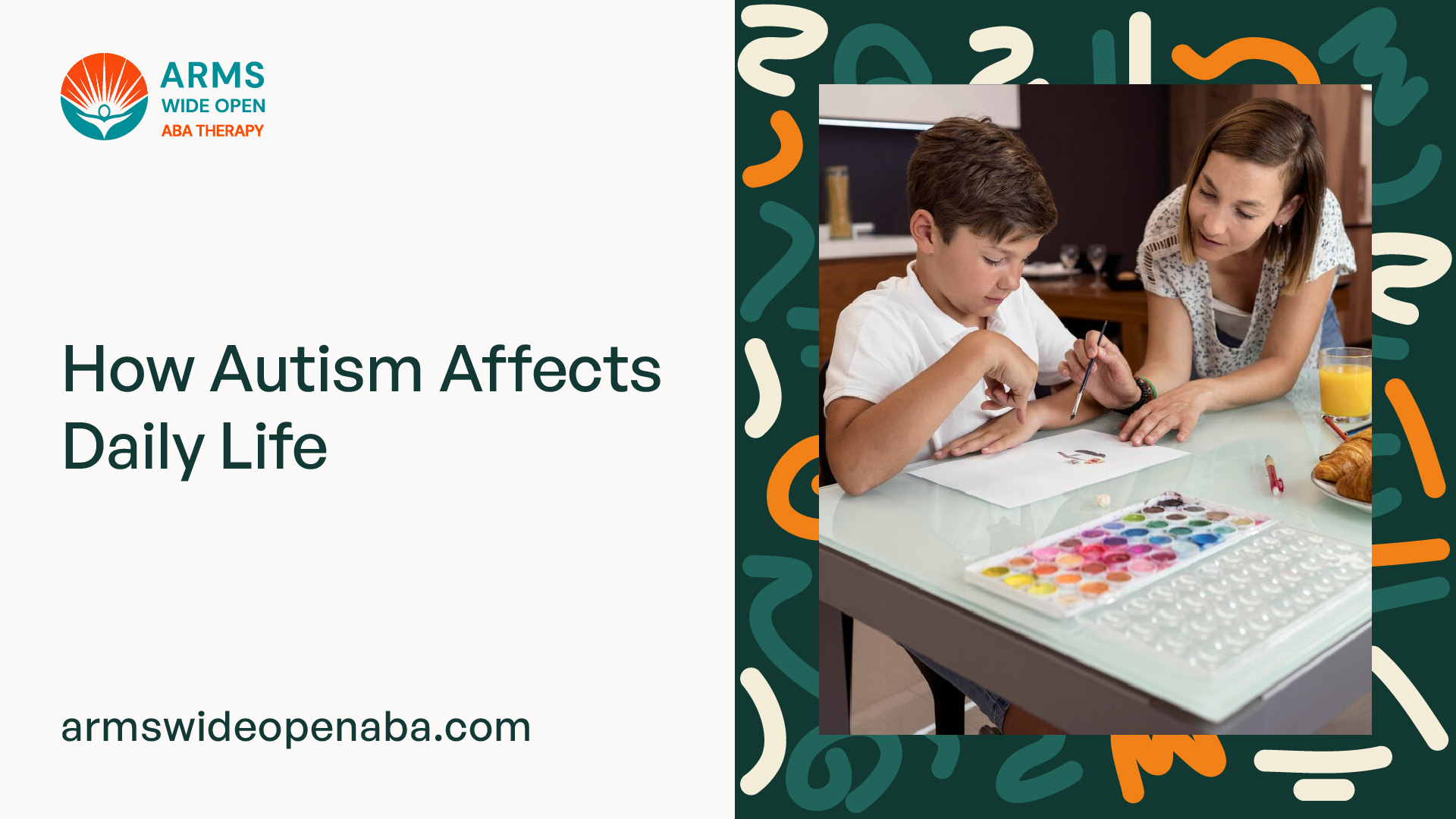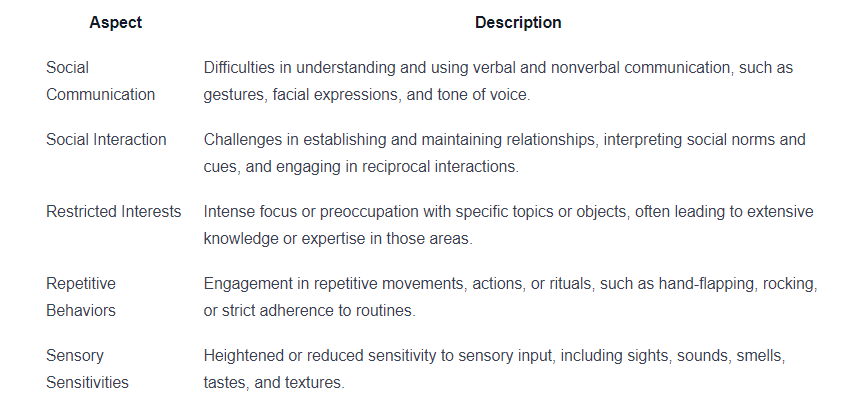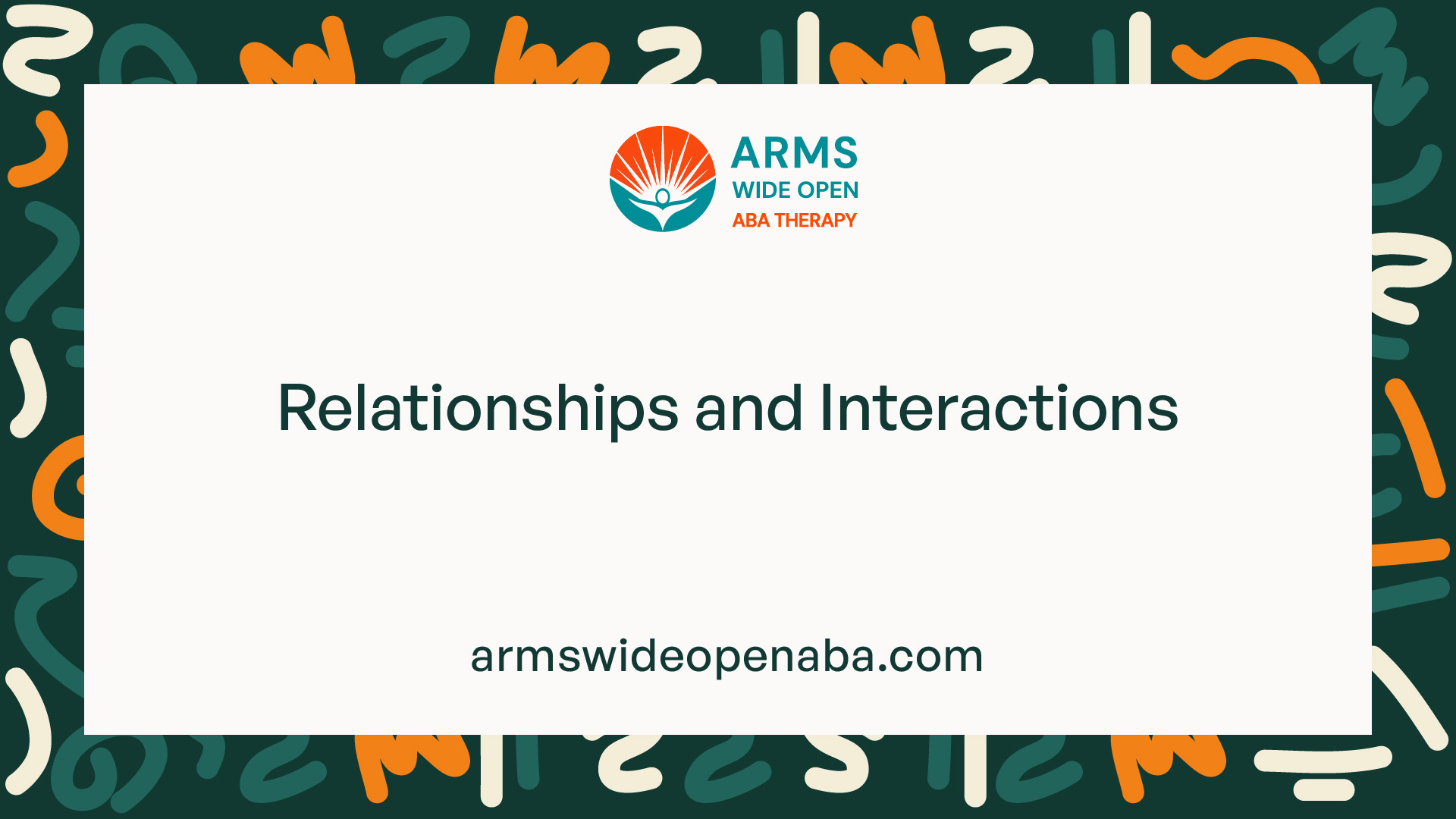How Autism Affects Daily Life
Unveil the reality of how autism affects daily life. Explore challenges, support systems, and advocacy for inclusivity.


Understanding Autism
To comprehend the impact of autism on daily life, it is essential to gain a deeper understanding of this complex neurological condition. This section will explore what autism is and delve into the different aspects of Autism Spectrum Disorder (ASD).
What is Autism?
Autism is a developmental disorder that affects the way individuals perceive and interact with the world around them. It is characterized by challenges in social communication and interaction, as well as restricted and repetitive patterns of behavior, interests, or activities.
While autism manifests differently in each individual, common features include difficulties in socializing, communicating, and understanding social cues. People with autism may also exhibit repetitive behaviors, intense interests in specific topics, and sensory sensitivities.
Different Aspects of Autism Spectrum Disorder
Autism Spectrum Disorder encompasses a wide range of characteristics and abilities. The term "spectrum" is used to signify that autism presents itself differently in each person, with a wide variation in symptoms, severity, and areas of strength. Some individuals with autism may require significant support to navigate daily life, while others may have exceptional abilities in certain areas.
Here are some key aspects of Autism Spectrum Disorder:

Understanding the various aspects of Autism Spectrum Disorder provides insight into the unique experiences and challenges faced by individuals on the autism spectrum. By fostering understanding and promoting acceptance, society can create a more inclusive and supportive environment for individuals with autism to thrive.

Daily Challenges Faced by Individuals with Autism
Living with autism presents unique challenges that individuals face on a daily basis. These challenges can vary from person to person, but some common difficulties include communication difficulties, sensory sensitivities, and social interaction challenges.
Communication Difficulties
Communication can be a significant challenge for individuals with autism. They may struggle with verbal and non-verbal communication, making it difficult to express their needs, feelings, and thoughts effectively. Some individuals may have delayed speech development or exhibit repetitive language patterns. Others may have difficulty understanding social cues, gestures, or sarcasm.
Communication Challenges
Verbal communication delays or difficulties
Limited eye contact
Difficulty understanding non-verbal cues
Repetitive language patterns
To overcome these challenges, individuals with autism may benefit from alternative communication methods, such as visual supports, augmentative and alternative communication (AAC) devices, or sign language. It's crucial for caregivers, educators, and the community to provide a supportive and inclusive environment that encourages effective communication.
Sensory Sensitivities
Many individuals with autism experience sensory sensitivities, where they may be hypersensitive or hyposensitive to certain sensory stimuli. This means they may have intense reactions or difficulties processing sensory information from their environment. Common sensory sensitivities include sensitivity to noise, bright lights, textures, smells, or certain tastes.
Sensory Sensitivities
Hypersensitivity to noise, lights, textures, smells, or tastes
Difficulty filtering sensory information
Overwhelm in crowded or stimulating environments
These sensitivities can lead to sensory overload, causing distress or anxiety. To manage sensory sensitivities, individuals with autism may employ coping strategies such as wearing noise-cancelling headphones, using sensory-friendly clothing, or creating calm and quiet spaces. Understanding and accommodating these sensory needs can greatly improve the daily experiences of individuals with autism.
Social Interaction Challenges
Social interaction can be challenging for individuals with autism. They may struggle with understanding social cues, maintaining appropriate eye contact, or engaging in reciprocal conversations. Difficulties in social interaction can lead to feelings of isolation and difficulties forming and maintaining relationships.
Social Interaction Challenges
Difficulty understanding social cues and body language
Challenges with maintaining eye contact
Difficulty initiating and sustaining conversations
Limited understanding of social norms and expectations
Supporting individuals with autism in social interactions involves creating opportunities for socialization, providing social skills training, and fostering understanding and acceptance within the community. Encouraging inclusive environments where individuals with autism feel accepted and valued can help them overcome social interaction challenges.
Understanding and addressing these daily challenges faced by individuals with autism is crucial to promote inclusivity and support their overall well-being. By fostering awareness, acceptance, and providing appropriate support systems, we can create a more inclusive society for individuals with autism.
Impact on Daily Routine
Living with autism can significantly impact an individual's daily routine. The challenges and unique characteristics associated with autism often necessitate the establishment of structured routines and the development of coping mechanisms and strategies.
Structure and Routine Importance
For individuals with autism, having a structured routine is crucial. Predictability and consistency provide a sense of security and stability, which can help reduce anxiety and promote overall well-being. Establishing a daily routine helps individuals with autism navigate their day more smoothly and feel more in control.
A structured routine can include specific activities, tasks, and timeframes for various daily tasks such as waking up, getting dressed, mealtimes, and engaging in recreational activities. Visual schedules and calendars are beneficial tools for individuals with autism, as they provide a visual representation of the day's activities and help maintain a sense of order.
Coping Mechanisms and Strategies
Individuals with autism often develop coping mechanisms and strategies to navigate the challenges they face in their daily lives. These coping mechanisms can vary depending on the individual and their specific needs. Some common strategies include:
- Sensory regulation techniques: Sensory sensitivities are common among individuals with autism. Coping mechanisms may involve the use of sensory tools such as weighted blankets, noise-canceling headphones, or fidget toys to help manage sensory overload.
- Social skills training: Many individuals with autism struggle with social interactions. Social skills training programs can provide valuable tools and strategies to improve communication, understanding social cues, and building relationships.
- Self-calming techniques: When faced with overwhelming situations, individuals with autism often employ self-calming techniques to manage stress or anxiety. This can include deep breathing exercises, engaging in preferred activities, or finding a quiet and safe space to regroup.
- Visual supports: Visual supports, such as visual schedules, social stories, and visual cues, can assist individuals with autism in understanding and following instructions, managing transitions, and comprehending social expectations.
It's important to remember that coping mechanisms and strategies can be highly individualized. What works for one person with autism may not work for another. Tailoring support and interventions to meet the unique needs of each individual is crucial in promoting their well-being and enhancing their ability to navigate daily life.
Understanding the impact of autism on daily routines and implementing supportive structures and coping mechanisms can significantly improve the quality of life for individuals with autism. By recognizing and accommodating their specific needs, we can create an environment that fosters their growth, development, and overall happiness.

Relationships and Interactions
Living with autism can have a profound impact on an individual's relationships and interactions, both within their family dynamics and in their interactions with peers and the wider community. Understanding these dynamics is crucial for fostering understanding and support for individuals on the autism spectrum.
Family Dynamics
Autism can significantly influence family dynamics. The challenges and unique characteristics associated with autism spectrum disorder (ASD) can affect the way family members interact and relate to one another. Some key aspects to consider include:
- Communication: Communication difficulties, such as limited verbal skills or challenges with nonverbal cues, can affect how individuals with autism communicate and express their needs. This can require family members to adapt their communication styles and find alternative methods to effectively connect and understand one another.
- Sensory Sensitivities: Individuals with autism often have sensory sensitivities, which can result in heightened responses to certain sounds, textures, or visual stimuli. This can impact family dynamics, as the environment may need to be modified to accommodate these sensitivities and create a more comfortable and supportive atmosphere.
- Routines and Structure: Establishing routines and providing structure is essential for many individuals with autism. Family members may need to adapt their daily routines and activities to provide the predictability and stability that individuals with autism thrive on.
Interactions with Peers and Community
Navigating social interactions can be particularly challenging for individuals with autism. Interacting with peers and participating in community activities may require additional support and understanding. Some key aspects to consider include:
- Social Communication: Difficulties in understanding social cues and nonverbal communication can make it challenging for individuals with autism to initiate and maintain social interactions. This can impact their ability to form and sustain friendships, as well as engage in group activities.
- Sensory Overload: Social environments can be overwhelming for individuals with autism due to sensory sensitivities. Noisy or crowded spaces may cause anxiety or sensory overload, making it harder for individuals to engage in social interactions. Providing opportunities for individuals with autism to participate in activities that accommodate their sensory needs can foster more positive social experiences.
- Inclusion and Acceptance: Inclusive environments that promote acceptance and understanding are crucial for individuals with autism to feel valued and included. Educating peers and the wider community about autism can help foster empathy and create a more accepting environment for individuals on the spectrum.
Understanding the impact of autism on relationships and interactions is essential for promoting inclusivity and support. By adapting communication styles, providing structure, and fostering understanding within families, as well as promoting acceptance and creating inclusive communities, we can help individuals with autism thrive in their social interactions and build meaningful connections.
Support Systems and Resources
Living with autism can present unique challenges, but having access to support systems and resources can greatly enhance the daily lives of individuals with autism and their families. In this section, we will explore the importance of support networks and discuss how to access services and assistance.
Importance of Support Networks
Support networks play a crucial role in providing emotional, practical, and social support to individuals with autism and their families. These networks can include family members, friends, support groups, and professionals who specialize in autism. The benefits of having a strong support network are numerous, including:
- Emotional support: Having people who understand and empathize with the challenges faced by individuals with autism can provide a sense of comfort and reassurance. Support networks can offer a safe space to share experiences, seek advice, and receive encouragement.
- Practical assistance: Support networks can assist with various practical aspects of daily life. This can include helping with tasks such as transportation, childcare, and accessing services. They can also provide valuable information about available resources and programs.
- Social connection: Building meaningful relationships and social connections is important for everyone, including individuals with autism. Support networks can help facilitate social interactions and opportunities for individuals with autism to engage with others who share similar experiences or interests.
Accessing Services and Assistance
Accessing appropriate services and assistance is essential for individuals with autism to thrive in their daily lives. There are various resources available that can provide support and cater to specific needs. Here are some key avenues to explore:
- Medical professionals: Consultation with healthcare providers, such as pediatricians, neurologists, or psychiatrists, can help in diagnosing autism and providing guidance on available treatment options.
- Therapy services: Different types of therapy, such as behavioral therapy, speech therapy, and occupational therapy, can be beneficial for individuals with autism. These services can help improve communication skills, manage sensory sensitivities, and develop life skills.
- Educational support: Schools often have special education programs and resources to support students with autism. Individualized Education Programs (IEPs) can be developed to address specific learning needs and provide necessary accommodations.
- Community organizations: Nonprofit organizations and community centers often offer support groups, workshops, and recreational activities that cater to individuals with autism and their families. These resources can provide a sense of belonging and opportunities for social engagement.
- Government programs: Many countries have government-funded programs that offer support and financial assistance for individuals with autism. These programs can include disability benefits, respite care services, and vocational training.
It's important to research and connect with local resources to find the most relevant and suitable services. Additionally, online platforms and forums can provide a wealth of information and connect individuals with autism and their families to a broader support community.
By harnessing the power of support networks and utilizing available resources, individuals with autism can navigate their daily lives with greater confidence and fulfillment. Accessing appropriate services and assistance can make a significant difference in promoting overall well-being and maximizing potential.
Advocacy and Awareness
Raising awareness and advocating for individuals with autism is crucial for promoting understanding, acceptance, inclusivity, and accessibility. By educating society about autism, we can foster a more inclusive and supportive environment for those on the autism spectrum.
Promoting Understanding and Acceptance
Promoting understanding and acceptance of autism is essential to combat misconceptions and stereotypes. By increasing awareness of the diverse range of abilities and challenges that individuals with autism may have, we can encourage empathy and respect. Education plays a vital role in dispelling myths and promoting accurate information about autism.
One effective way to promote understanding is through autism awareness campaigns and initiatives. These campaigns aim to educate the general public, schools, workplaces, and communities about autism. They provide information about the unique characteristics and needs of individuals on the autism spectrum, helping to create a more inclusive and accepting society.
Advocating for Inclusivity and Accessibility
Advocacy efforts for individuals with autism focus on ensuring inclusivity and accessibility in all areas of life. This includes advocating for equal opportunities in education, employment, healthcare, and social settings.
Inclusive education is a key area of advocacy, aiming to provide individuals with autism the necessary support and accommodations to thrive in mainstream schools. This may involve specialized education plans, trained teachers, and a supportive learning environment. By advocating for inclusive education practices, we can help create an educational system that meets the diverse needs of students with autism.
Advocacy for employment opportunities involves promoting inclusive hiring practices and workplace accommodations. This includes raising awareness among employers about the strengths and abilities of individuals with autism and providing support for successful workplace integration.
Another aspect of advocacy is ensuring accessibility to healthcare services. This involves advocating for healthcare providers to have the knowledge and skills to effectively support individuals with autism. Additionally, advocating for accessible sensory-friendly environments in public spaces can greatly benefit individuals with sensory sensitivities.
Advocacy efforts rely on collaboration between individuals with autism, their families, organizations, and the wider community. By working together, we can create a society that values and supports individuals with autism, ensuring they have equal opportunities to participate and contribute.
Advocacy and awareness are ongoing processes that require ongoing efforts. By continuing to advocate for understanding, acceptance, inclusivity, and accessibility, we can create a more inclusive and supportive world for individuals with autism and their families.
Sources
https://www.abtaba.com/blog/how-autism-affects-daily-life
https://overcomewithus.com/autism/how-autism-affects-daily-life
https://www.nhs.uk/conditions/autism/what-is-autism/
Similar articles
We’re here to help you

Our team is here to assist you in this process. Contact us for any assistance.
it’s easy to apply
We Accept Most Insurances
Our in-network insurance partnerships make ABA therapy more accessible to families throughout our service areas.







Our Insurance Process
We'll request your insurance details to help us verify your plan's coverage for ABA therapy. Once we've received this information, we'll walk you through your benefits, including copayments, deductibles and out-of-pocket maximums, so you know what to expect in advance.
Our team will then handle the preauthorization and all the necessary paperwork.
.svg)





















.jpeg)


































.jpeg)




.jpeg)







.jpeg)











.jpeg)
















